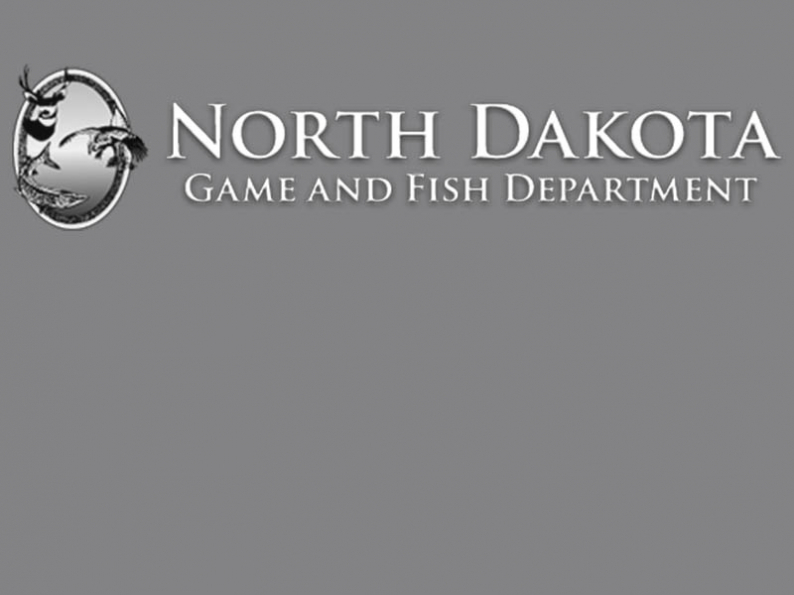
The North Dakota Game and Fish Department is partnering with the U.S Department of Agriculture to provide landowners with options to enroll acreage into two new programs designed to develop wildlife habitat.
A new Conservation Reserve Enhancement Program, and State Acres For Wildlife Enhancement, are companion programs to the popular Conservation Reserve Program. Game and Fish private land section leader Kevin Kading said the partners are excited about these opportunities available to landowners.
“We’ve worked a long time developing these projects with USDA, and working with other partners and stakeholders,” Kading said. “We feel these are good options for landowners to address a resource concern and also open up some quality habitat for hunters.”
The North Dakota Riparian Project CREP allows states to identify resource concerns and design a custom built CRP along riparian areas, with special focus areas, additional incentives and added flexibility within practices to address resource concerns.
Landowners interested in CREP can enroll acres in portions of Adams, Billings, Bowman, Burleigh, Dunn, Emmons, Grant, Golden Valley, Hettinger, McKenzie, Mercer, Morton, Oliver, Sioux, Slope and Stark counties. The enrollment cap for this program is 20,000 acres.
Over a 10-year period, approximately $19 million in federal funds from the Farm Service Agency will be used to provide annual rental, incentive and cost-share payments for filter strips, riparian buffers, or pollinator and honeybee habitat. The state will contribute more than $4.3 million, which is funded from the Game and Fish Department’s Private Land Open To Sportsmen program and the North Dakota Outdoor Heritage Fund.
Kading said riparian areas are identified in the Department’s Wildlife Action Plan, and provide important habitat for a variety of fish, plant and animal species, including pollinators and other species of concern, by filtering nutrients and sediments and improving water quality.
Producers interested in developing filter strips, riparian buffers or pollinator and honeybee habitat will enter into a CREP contract with FSA and receive annual rental payments, incentives and cost-share. Game and Fish will also provide additional incentives and cost-share on CREP acres.
Expired CRP is not eligible for the North Dakota Riparian Project CREP. Land offered must meet FSA cropping history requirements and be located within the project boundary.
There is no size requirement for enrolling land into CREP. Any land enrolled in a CREP contract with USDA must also be enrolled in the Game and Fish PLOTS program. Landowners will receive payments for allowing walk-in hunting access, and are eligible for additional habitat enhancements, incentives and cost-share.
Kading said landowners don’t have to allow public access to their entire property, only a 40-acre minimum is required for enrollment in PLOTS.
In addition to the CREP, North Dakota landowners can enroll up to 40,000 acres into the Declining Grasslands Birds SAFE, which is designed to develop habitat for species of special concern.
“Many species of grassland birds have seen significant declines in recent years,” Kading said. “The project was developed around a suite of grassland birds identified in the Department’s Wildlife Action Plan, one of those species is the state bird, the Western meadowlark.”
Through SAFE, landowners can establish native grasses and forbs that will help maintain or improve grassland bird populations. Managed grazing is allowed and will help ensure a healthy and diverse prairie habitat. Landowners will receive annual CRP rental payments, cost-share and signup incentives from USDA. Public access is not required, Kading said, but landowners may be eligible for additional payments and cost-share for allowing walk-in access through the PLOTS program.
Counties in the project area for SAFE are all of Adams, Billings, Bowman, Burleigh, Dunn, Emmons, Grant, Golden Valley, Hettinger, Kidder, Logan, McIntosh, McKenzie, Mercer, Morton, Oliver, Sioux, Slope, Stark and Williams counties; and portions of Burke, Dickey, Divide, Foster, LaMoure, McHenry, McLean, Mountrail, Sheridan, Stutsman, Ward and Wells counties.
For information regarding the project, landowners should contact a local Game and Fish private land biologist or their local county USDA service center.